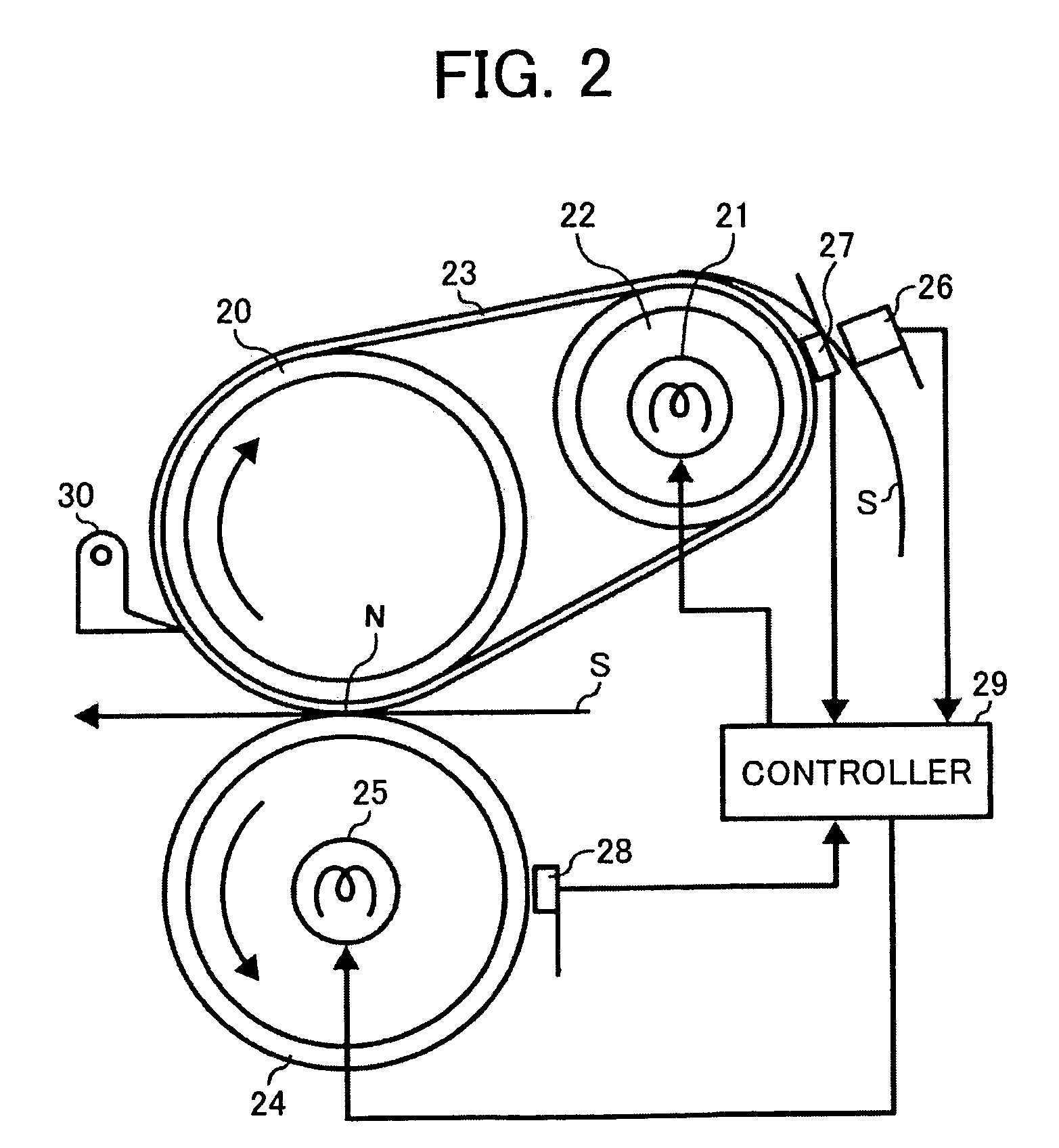Belt type fixing device including a contact and a non-contact temperature sensor and a reflection type sheet sensor
a technology of temperature sensor and fixing device, which is applied in the field of electrographic copier, printer, etc., can solve the problems of belt surface layer melting or other damage,
- Summary
- Abstract
- Description
- Claims
- Application Information
AI Technical Summary
Benefits of technology
Problems solved by technology
Method used
Image
Examples
Embodiment Construction
[0020]Referring to FIG. 1 of the drawings, an electrophotographic image forming apparatus to which the present invention is applied is shown and implemented as a copier by way of example. As shown, the copier includes a photoconductive drum 1 which is a specific form of a photoconductive element. Arranged around the drum 1 are a charger 2, an exposing position 3, a developing unit 4, a transfer charger 5 and a drum cleaner 6.
[0021]A glass platen 7 is positioned in the upper portion of the copier body and on which a document is to be laid. A cover plate 8 for pressing the document against the glass platen 7 is positioned above the glass platen 7. Optics 9 are arranged below the glass platen 7 for optically reading the document laid on the glass platen 7 and exposing the drum 1 imagewise with the resulting image data. A sheet cassette 10 is located in the lower portion of the copier body and loaded with a stack of paper sheets or similar sheets.
[0022]A pickup roller 11 pays out the to...
PUM
 Login to View More
Login to View More Abstract
Description
Claims
Application Information
 Login to View More
Login to View More - R&D
- Intellectual Property
- Life Sciences
- Materials
- Tech Scout
- Unparalleled Data Quality
- Higher Quality Content
- 60% Fewer Hallucinations
Browse by: Latest US Patents, China's latest patents, Technical Efficacy Thesaurus, Application Domain, Technology Topic, Popular Technical Reports.
© 2025 PatSnap. All rights reserved.Legal|Privacy policy|Modern Slavery Act Transparency Statement|Sitemap|About US| Contact US: help@patsnap.com



